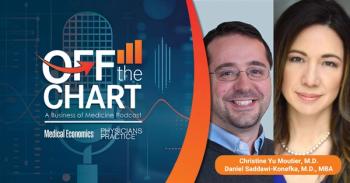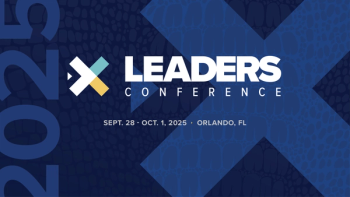
‘What Surprised Me Most About Being a Physician’
Internist Kathleen Summers learns about keeping an open mind when there’s no evidence as she encounters patients who want to try alternative medical treatments.
“Is it okay to drink my pee?” Jenny was timid, a bit embarrassed by the question, and obviously expecting me not to condone her latest choice of treatment. My patient didn’t ask me if I thought urine therapy would help her with her chronic abdominal complaints attributed to Irritable Bowel Syndrome, only if I thought it wouldn’t harm her. How does a physician who likes to think she has an open mind, but who also appreciates evidence-based medicine, answer that question? I had not come across any randomized, double-blind, placebo-controlled trials addressing the therapeutic or harmful effects of drinking urine, at least none that I could recall.
Jenny’s yoga teacher had suggested that her entire class drink their own urine every morning in a 5,000-year-old practice from known as Amaroli. Jenny was told it was a panacea, something that would “cure everything.” She wanted to try it for herself, but was worried it might be dangerous. She wanted reassurance.
Surprisingly, this has become a common occurrence in my medical practice - not pee drinking questions per se, but all types of questions about many different kinds of complementary and alternative medicine therapies. I’ve been asked about homeopathy to treat Hodgkin’s Lymphoma, turmeric powder to protect open abrasions, and the application of bacon grease to heal infected wounds. Arthritic patients have asked if acupuncture can alleviate their pain, if hydrotherapy footbaths with chemical chelators will pull the toxins that cause pain from their joints, and if the mixture of 26 herbs that their chiropractor prescribed will interfere with any of their current medications. Can yoga cure sciatica, and more importantly, which yoga postures should they avoid to keep from making it worse?
None of these, with perhaps the exception of herbal remedies, were questions I thought I would be addressing on any kind of frequent basis when I entered medical school. I bowed deeply before the altar of science, and I expected that everyone else did too. Our advances in scientific methodologies and the creation of the Federal Drug Administration, where I interned for a summer between semesters, had essentially wiped the snake oil dealers off the map. Doctors and patients understood that these advances and agencies protected us all from charlatanism, from dangerous practices, and from separating fools from their money. Treatments with solid, objective evidence were the only ones acceptable.
Since the early 1990s the popular trend in healthcare has shifted more and more toward complementary and alternative medicine ( CAM ), most of which has little strong scientific data to corroborate it. A government survey of 30,000 Americans in 2002 revealed that 36 percent had used some form of nonprayer-based CAM within the past year. Those therapies included yoga, Ayurveda, folk medicine, hypnosis, Qi gong, Reiki, Tai Chi, acupuncture, homeopathy, herbs, meditation, and chiropractic among others.
The scientific community has been trying to catch up. The National Institute of Health (NIH) developed the National Center of Complementary and Alternative Medicine (NCCAM) that offers free CME credits on CAM topics online. Through its auspices government funding is being allocated to study the most sought after alternative remedies. More and more medical schools and hospitals are developing programs of Integrative Medicine for implementing CAM therapies and studying their effects.
This week a journal arrived in my rural mailbox that printed an abstract for an article published in the September 2009 issue of Spine entitled “Yoga Effective in Treating Chronic Low Back Pain.” It noted reduced functional disability, pain, and depression in patients who did a 24-week course of yoga compared to standard medical care. A different journal that arrived during this same week contained a two-page commentary by Baum and Ernst asking whether or not we should maintain an open mind about homeopathy. They essentially concluded that we should not and quoted Petr Skrabanek who once stated in the Lancet that “if your mind is too open your brain slides out.” CAM is beginning to get as much attention from doctors as from patients.
Still, the evidence is lacking. Studies for most treatments simply don’t exist, or if they do, they are of poor quality. Without scientifically acquired data, today’s physicians are left to fend for themselves and their patients, trying to piece together theory, belief, scraps of data, and mounds of prejudice from both sides of the debate regarding their efficacy.
My expectations of practicing medicine before I started medical school didn’t include answering questions about the safety of drinking urine as part of a yoga program or, for that matter, any of the other far out questions that have come my way. I thought science had all the answers, that anything not yet scientifically proven probably wasn’t worth much, and that everyone accepted this as the sensible approach to live by. Now I’m constantly being surprised by the range and extent of CAM therapies that have worked their way into healthcare in the today, and by the inadequate resources we as physicians have to evaluate them.
But perhaps more surprising to me as a practitioner has been the opening of my own mind to many therapies that, although unproven, tweak the art of medicine in beautiful ways to heal patients or at least provide them with some temporary measures of relief. Whether they work only through the placebo effect, an effect established to be effective for up to 35 percent of patients by Henry Beecher’s landmark article in the Journal of the American Medical Association in 1955, or whether they have some magic of their own remains to be determined by rigorous scientific standards. I believe the former is valid, even though doctors who employ this lost “art” of medicine with that purpose have been labeled “unethical” practitioners, likely thanks at least in part to an article published in the Scientific American in the 1950s by Sissela Bok entitled “The Ethics of Giving Placebos.”
When it comes to CAM , I’ve learned to support my patients in their choices while tempering their enthusiasm from time to time with evidence of harm or sometimes just plain old common sense. For Jenny, since she wasn’t on any medications or recreational drugs and was careful to follow a healthy diet, I told her that as long as she didn’t overdo it, a little taste of her own fresh urine every morning wasn’t likely to cause her any harm. I’ve adjusted to the new climate in healthcare, and my mind is open but balanced - without any need to pick my brain up off the floor.
Kathleen Summers, MD, PhD, is a board-certified internal medicine physician in central Illinois who frequently works shifts in small local emergency rooms and who travels in Asia with a backpack whenever she gets the chance. She is a graduate of Southern Illinois University and Northwestern University Medical School.
This article originally appeared in the March 2010 issue of Physicians Practice.
Newsletter
Optimize your practice with the Physicians Practice newsletter, offering management pearls, leadership tips, and business strategies tailored for practice administrators and physicians of any specialty.









